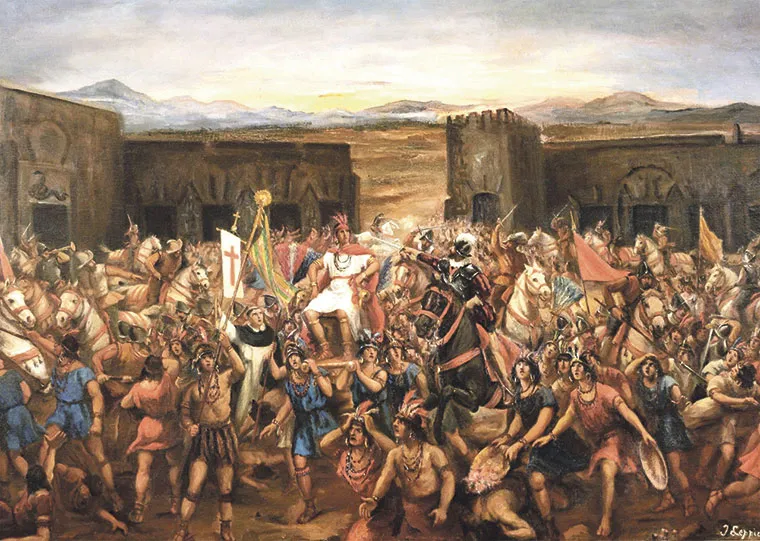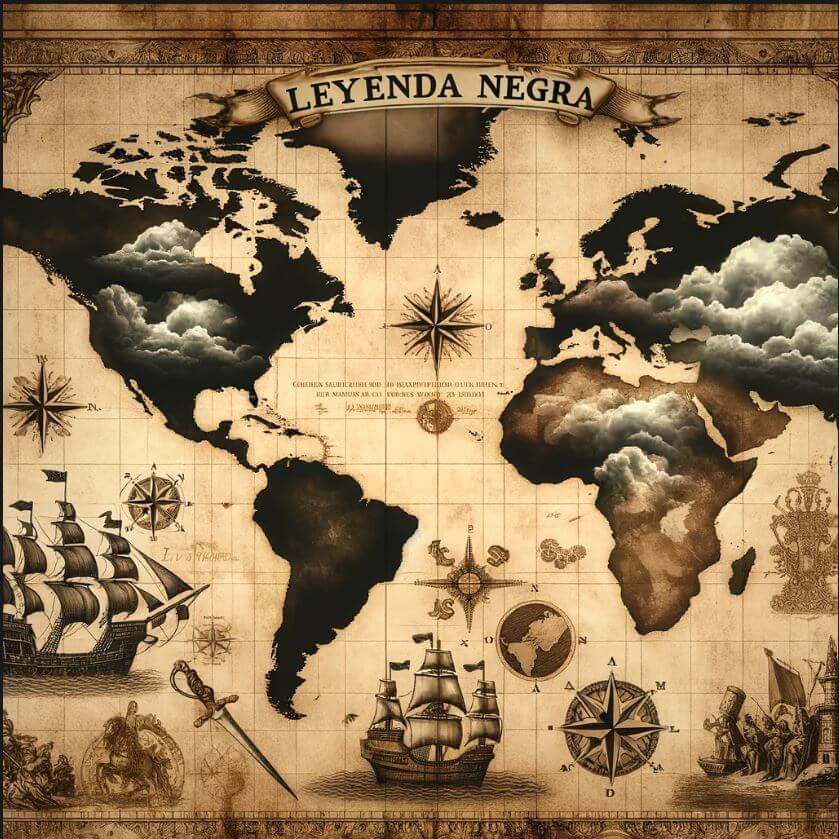If you’ve ever heard that Spain was the villain of history, chances are you’ve heard of the Black Legend. This term refers to the negative image that was created about Spain in the 16th and 17th centuries, describing it as a cruel, fanatical and oppressive country. But how much truth is there in this?
Origin of the Black Legend
The Black Legend originated in the 16th century, when Spain was the greatest world power. Enemies such as England and the Netherlands, which were at war with the Spanish Empire, spread propaganda that exaggerated or invented abuses committed by the Spanish.
One of the main people responsible for fueling this image was Bartolomé de las Casas, a Dominican friar who denounced the abuses of some conquerors in his work Brief relation of the destruction of the Indies. Although his intention was to improve the situation of the indigenous people, his book was used by the enemies of Spain to paint a terrible picture of colonization.
In addition to the Casas, other European writers and propagandists, such as the English and Dutch, contributed to feeding this image. In their pamphlets and chronicles the Spanish were presented as unscrupulous barbarians, which served as justification for their own colonial and expansionist actions.
The Myths of the Black Legend
It is important to analyze these events from a historical perspective. What we consider atrocities today, in that context were part of the dynamics of conquest and expansion that all European powers practiced. However, Spain has been singled out disproportionately compared to other nations. Let’s look at some of the most common myths:
– The Spanish Inquisition was the worst of all
The Spanish Inquisition is often portrayed as a brutal institution that tortured and burned thousands of people. The reality is that the Inquisition existed in many countries in Europe, and the Spanish one was neither the bloodiest nor the most repressive. In fact, in countries like France and England there were many more executions for heresy. In comparison, the Spanish Inquisition had a smaller number of death sentences and, although it used torture methods, they were no different from those used by other inquisitions in Europe.
-The Spanish exterminated the indigenous people in America
Although there was violence in the conquest, it was not intentional genocide. Most indigenous deaths were due to diseases such as smallpox, which Europeans unknowingly carried. In addition, many indigenous people collaborated with the Spanish to defeat their enemies, such as the Tlaxcalans and other peoples with Hernán Cortés against the Aztecs. It is important to note that the Spanish implemented policies of miscegenation and assimilation, which contrasted with the Anglo-Saxon model of extermination and segregation that was applied in North America.
In contrast, in the conquest of North America carried out by the English and later by the Americans, there were truly systematic massacres of indigenous people, such as the Wounded Knee Massacre in 1890 or the war of extermination against the native peoples of the Great Plains. In many cases, these populations were displaced to reserves without the right to integrate into colonial society.
What’s more, when the first university was founded in North America, Harvard University in 1636, several universities already existed in Latin America, as the Spanish Crown had promoted higher education in its territories. Some of the universities already established were:
National University of San Marcos (Peru) – 1551
University of Mexico (today UNAM, Mexico) – 1551
University of Santo Domingo (Dominican Republic) – 1538
University of Córdoba (Argentina) – 1613
In total, by the time Harvard was founded in 1636, there were already at least 10 universities in Latin America, demonstrating the early development of higher education in the region compared to North America.
-The Spanish Empire only brought oppression and poverty
Spain built universities, hospitals and cities in America, leaving a strong cultural and linguistic influence. Although there was exploitation and abuse, there were also laws to protect indigenous people, such as the Indian Laws, something unusual in other colonial powers. These laws sought to regulate the treatment of indigenous people and guarantee certain rights, although their compliance was not always effective. Unlike other powers, Spain promoted the miscegenation and integration of indigenous peoples within its system.

Has this happened in other countries?
Yes, the Black Legend is not exclusive to Spain. Other countries have also been victims of propaganda campaigns that distorted their historical image. Here some examples:
- France and “Perfidious Albion”: France and its allies have for centuries created a negative image of England, describing it as a treacherous, ambitious and dishonorable country. This emerged in conflicts such as the Hundred Years’ War and was strengthened in the Napoleonic era.
- Russia and “Russophobia”: Since the 19th century, some European countries have promoted the image of Russia as a backward and brutal country, something that intensified during the Cold War, when the West presented the Soviet Union as an absolute threat to the free world. Western propaganda about Russia has often served to justify policies of isolation or foreign interventions.
- The United States and its imperialist image: in many regions of the world, especially in Latin America and the Middle East, a vision of the United States as an imperialist and exploitative country has spread, which has real bases but also elements of exaggeration depending on the context. During the Cold War, the Soviet Union promoted this image in Third World countries to gain influence.
In general, rival powers often generate negative narratives about each other to influence public opinion. These campaigns have been used to justify conflicts, military interventions and geopolitical disputes.
Why is the Black Legend maintained?
Spain’s rival powers took advantage of this image to justify their own actions. England, for example, used the Black Legend to justify its piracy against Spanish ships. Today, these ideas persist in books, films, and the media, perpetuating a distorted view of history.
Furthermore, the Black Legend has been internalized in some sectors of Spain itself, which has led to a pessimistic view of its own history. Many school textbooks and cultural productions have replicated these narratives without critically analyzing them, contributing to their permanence.
In short, the Black Legend is nothing more than a mixture of truths, exaggerations and lies created for political purposes. This does not mean that Spain has not made mistakes, far from them and not at all justifiable, but its history is much more complex than the simple role of “global villain.” The best way to understand it is to investigate with a critical eye and avoid falling into myths that have been circulating for centuries.
There is always more than one side to a story, so don’t stick to just one! What do you think about the Black Legend?



